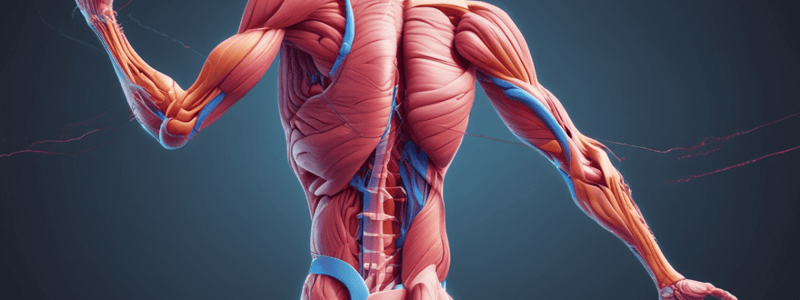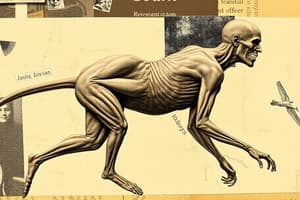Podcast
Questions and Answers
Match the following types of muscles with their control mechanism:
Match the following types of muscles with their control mechanism:
Voluntary muscles = Perform voluntary contractions and relaxations Involuntary muscles = Perform involuntary contractions
Match the following actions with the appropriate muscle movement:
Match the following actions with the appropriate muscle movement:
Bending the elbow = Brain instructs the triceps muscle to contract Straightening the arm = Brain signals the triceps muscle to relax
Match the following characteristics with the types of muscles:
Match the following characteristics with the types of muscles:
Voluntary muscles = Work in coordinated groups with other muscles Involuntary muscles = Controlled by autonomic nervous system
Match the following with their locations in the body:
Match the following with their locations in the body:
Match the following with their functions:
Match the following with their functions:
Match the following with their role in posture:
Match the following with their role in posture:
Match the following with their anchorage points:
Match the following with their anchorage points:
Match the following with their specific functions:
Match the following with their specific functions:
Match the following muscle type with its control mechanism:
Match the following muscle type with its control mechanism:
Match the following example with the type of muscle involved:
Match the following example with the type of muscle involved:
Match the following term with its description:
Match the following term with its description:
Match the following location with the type of muscle found there:
Match the following location with the type of muscle found there:
Match the following scenario with the correct muscle action:
Match the following scenario with the correct muscle action:
Match the following statement with the appropriate muscle function:
Match the following statement with the appropriate muscle function:
Match the following muscle groups with their main functions:
Match the following muscle groups with their main functions:
Match the following trunk muscle subdivisions with their descriptions:
Match the following trunk muscle subdivisions with their descriptions:
Match the following limb muscle subdivisions with their characteristics:
Match the following limb muscle subdivisions with their characteristics:
Match the following muscle groups with their anchorage points:
Match the following muscle groups with their anchorage points:
Match the following muscle groups with their respective locations in the body:
Match the following muscle groups with their respective locations in the body:
Flashcards are hidden until you start studying




